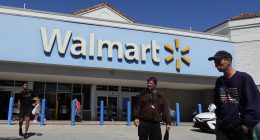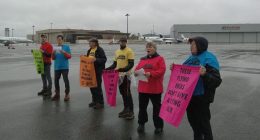
Mahalo for supporting Honolulu Star-Advertiser. Enjoy this free story!
Even before Hawaii officially documented its first case of the coronavirus on March 7, 2020, the state’s emergency response specialists had been tapped to follow news of the emerging pandemic and try to stay a step ahead of the virus.
First activated two years ago, on Feb. 25, 2020, the Hawaii Emergency Management Agency’s COVID-19 response has been the longest emergency activation in its history.
The agency has been working around the clock from its headquarters in a pre-World War II-era bunker in Diamond Head Crater. But with coronavirus-related funding and emergency orders on the state and federal levels expiring, the scale of operations could change as funding runs dry.
The National Guard and state Department of Health have been at the forefront of the state’s response, but HI-EMA has played a crucial role behind the scenes coordinating plans for the Safe Travels program, working on supply chain issues and coordinating data and information sharing between state and federal agencies while also securing federal funds.
Currently, the federal government is footing the bill for much of the COVID-19 response. During a weekly statewide interagency meeting Tuesday, HI-EMA Administrator Luke Meyers updated officials from across the islands via a remote connection from inside the bunker.
“We continue to see our overall numbers decline, if not kind of steadily decline, which is some good news not only here, but internationally and on the mainland,” Meyers said. “But as we have stressed in the past we’ve kind of seen these lulls between waves. There’s no evidence that we will not have a future wave of any variety.”
As of Sunday, HI-EMA’s COVID-19 Dashboard showed a total of 236,009 cases and 1,334 coronavirus-related deaths, with 229 new infections reported, well below the peak of about 5,700 cases just six weeks ago.
Some counties already have made changes to their emergency measures, with the City and County of Honolulu’s order set to expire March 6 unless Mayor Rick Blangiardi extends it. On Friday, Maui Mayor Michael Victorino announced the repeal of all county public health emergency rules effective Tuesday.
If federal measures are not extended, all federal emergency assistance for the COVID-19 response would end effective April 1.
HI-EMA, staffed by civilians, is part of the state Department of Defense along with the Hawaii Army and Air National Guards. It oversees interagency cooperation in the event of hurricanes, tsunamis, volcanic eruptions and other disasters.
Gov. David Ige officially declared a state emergency after the World Health Organization declared the novel coronavirus a global pandemic on March 10, 2020. Ige appointed Maj. Gen. Kenneth Hara, head of the Defense Department, as the “incident commander” to oversee the state’s response.
The next month, National Guard members were activated to assist with the crisis, and at peak deployment the joint task force included more than 800 troops. Guard members were in many ways the face of the pandemic response, helping enforce Safe Travels at airports, delivering masks and other personal protective equipment as well as setting up testing and vaccination clinics.
But from the bunker in Diamond Head, HI-EMA quietly coordinated the response and sometimes aggressively reached outside of the islands to get things done.
“Hawaii had to compete with buyers as large as the state of California or entire nations to try and obtain the necessary supplies that we were going to need to supply all those PPE needs — the masks, the gloves, the gowns — and in some cases they weren’t even sure at that early date in the pandemic what was going to be needed,” said Adam Weintraub, HI-EMA communications director.
After securing supplies came other challenges. According to HI-EMA Logistics Branch Chief Carlos Rowe, the state was constantly short of warehouse space once it began getting supplies. Typically, the agency relies on a warehouse near the Diamond Head bunker, but the scale and length of the pandemic required much more space. Ultimately, three warehouses were used on Oahu alone.
“When a box of masks shows up at the clinic on the Big Island, there’s a lot that’s going on behind the scenes to make that happen,” Weintraub said.
Meyers noted that HI-EMA was working with agencies it normally wouldn’t work with during a typical natural disaster. The pandemic touched all aspects of life and government.
“It’s really been remarkable, just the amount of coordination and information sharing behind the scenes with all the partners,” Meyers said. “It really has stretched the imagination of what HI-EMA can do to support everyone with limited resources here in Diamond Head.”
HI-EMA Executive Officer David Lopez said state officials have come to better appreciate the “cascading” consequences of any decision they made.
“A lot of times we might look at a decision and think it’s going to solve something in the here and now,” Lopez said. “But we don’t see the cascading effects of what might happen down the road, and I think as a state, as HI-EMA, we’ve learned to be better at that.”
As an example, he said, the initial restrictions on which businesses could stay open and who could go to work, although deemed necessary to prevent the spread of COVID-19, left many residents without work. Without income, many residents struggled to afford food, and supply chain disruptions ended up exacerbating food shortages and affordability.
Even before the pandemic, Lopez noted, almost 1 in 4 residents relied on food banks for assistance.
“So now you have a growing number of unemployed people because the state’s not letting them work, they can’t work. They’re relying on going to the food bank already. Now they’re going to rely on it more,” Lopez explained. “But with less people working, there’s less donations into the food bank. And you see you have this cascading event that now we have to go out and find donations and bring in more food.”
As the pandemic wore on, the state became better at anticipating and getting ahead of problems before they happened, he said. As the delta variant began spreading over the summer, HI-EMA officials talked with hospitals and emergency management agencies in other states and learned that Hawaii was facing a shortage of oxygen for COVID-19 patients.
They immediately got to work making a plan.
“We had a relatively short window to do it, probably seven to 10 days to try to really get something rolling so that once the supply started coming in, we wouldn’t be dry on the island,” Lopez said.
HI-EMA coordinated with federal agencies and private companies to get hold of adequate oxygen supplies and make plans to ship it.
“Suppliers want to fly everything in right away, (but) some of us having experience with especially military lift and what’s available, and also with our experienced emergency management, knew not to put all your eggs in one basket,” Lopez said.
While HI-EMA made arrangements to bring in oxygen to Hawaii by air, officials also reached out to Matson and other shipping companies to set up an alternate supply chain by sea.
“People who simply want to try and solve the problem right away were so focused on the air that they didn’t want to do any sea work, sea legwork,” Lopez said. “And if we would have done that, we would have been another 10 days behind, because the air option didn’t work out.”
Though COVID-19 cases are declining, Hawaii is maintaining its indoor mask mandate for now, making it the last state to do so. HI-EMA officials said the top priority now is encouraging residents to get fully vaccinated. At the same time, the agency is looking ahead to what its operations will look like if funding runs dry.
“HI-EMA has begun discussions with our key partners in the COVID-19 response to identify how the response would be scaled back or otherwise modified if the federal funding ends or is reduced,” Weintraub said.
Officials said the pandemic has exposed issues they hope to address in advance of future disasters, particularly warehouse shortages. The pandemic also forced the agency to evolve.
“We’re always talking about being able to adapt to circumstances,” Rowe said. “COVID required people to isolate and to quarantine. So it was somewhat amazing to see the organization, which prides itself self on response and coordination, to be able to accomplish that in the modern world of telework, which required virtual communications.”
Meyers said different state and federal agencies have been forced to familiarize themselves with one another’s operations much more intimately over the course of two years, which he said “hopefully will help us be more effective in future incidents, whether it’s a hurricane or a pandemic or something entirely new.”
Source: Star Ads




